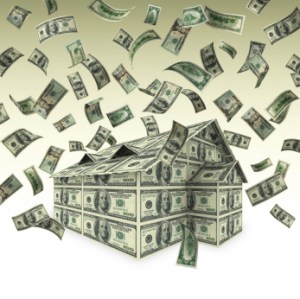 In 2007, the United States witnessed a failure of many sub-prime mortgage lenders (like Countrywide, which was taken over by Bank of America). And even some of the most recognized lenders were burned: Wells Fargo cut over 500 jobs in their sub-prime lending department. In addition, dozens of other sub-prime mortgage lenders have shut down. As a result of the chaos, underwriting rules have tightened significantly. Fewer borrowers now qualify for a mortgage or a refinance. More and more prospective borrowers have to deal with real estate short sales and property foreclosures, which often affect the value of the entire neighborhood. The real estate market across most of America collapsed in 2008 and 2009 but the panic is slowly starting to subside.
In 2007, the United States witnessed a failure of many sub-prime mortgage lenders (like Countrywide, which was taken over by Bank of America). And even some of the most recognized lenders were burned: Wells Fargo cut over 500 jobs in their sub-prime lending department. In addition, dozens of other sub-prime mortgage lenders have shut down. As a result of the chaos, underwriting rules have tightened significantly. Fewer borrowers now qualify for a mortgage or a refinance. More and more prospective borrowers have to deal with real estate short sales and property foreclosures, which often affect the value of the entire neighborhood. The real estate market across most of America collapsed in 2008 and 2009 but the panic is slowly starting to subside.
A little history and information about sub-prime mortgages can shed some light onto what happened. A borrower’s credit score and loan-to-value ratio typically determine the type of loan he or she will qualify for. Traditionally, less-than-decent credit scores (under 650) and high loan-to-value ratios (95-100% financing) resulted in sub-prime loans. Sub-prime loans carry higher interest rates than conventional mortgages, which results in a higher monthly payment and can sometimes lead to negative amortization (the loan balance owed grows over time because the monthly payments are not enough to cover both principal repayment and interest payments), especially early on in the repayment process. Further, sub-prime loans such as the “stated income” and “no documentation” mortgages (jokingly referred to as “liar loans”) are charged even higher borrowing rates. Most of these types of loans were also adjustable rate mortgages, which means at a certain time the monthly payment and/or terms can change significantly.
Naturally the huge growth of easy to obtain (but risky) mortgages led to a sharp demand for more and more real estate. Home prices skyrocketed and first-time speculators and investors entered the housing market. Offers of “interest only” loans were abundant but it soon reached a plateau. In 2009, many of these adjustable rate mortgages started to hit their 2-year mark and borrowers were stunned when they found out their new terms dramatically increased their monthly payments. Houses started to go into foreclosure. Banks were losing money and the sub-prime market came to a standstill. As home prices declined, many have found their homes are no longer worth nearly what they paid for them. Homeowners prefer not to sell at depressed prices, they cannot pay the monthly mortgage and they default.
In August of 2007, the major banks stopped lending to one another because they were afraid of getting stuck with bad sub-prime mortgages. Today it is more difficult to qualify for a mortgage but these tighter restrictions are aimed at preventing the US housing market from further collapse in the years ahead.
